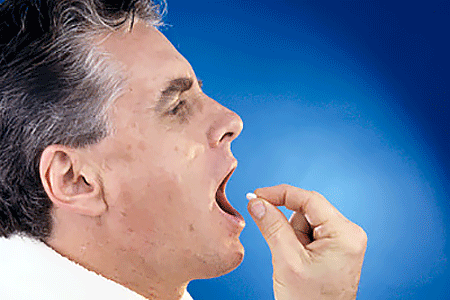Ringworm: Diagnosis and treatment
How do dermatologists diagnose ringworm?
A dermatologist can often tell if you have ringworm by looking at the infected area.
Your dermatologist may also examine other areas of your body. It’s common to have athlete’s foot and ringworm on one or both hands. Sometimes, the infection spreads to one or more nails.
Before giving you the diagnosis, your dermatologist may send a bit of the infected skin, hair, or nail to a laboratory.
Taking a sample is easy. If you might have ringworm on your skin, your dermatologist will scrape off a bit of the infected skin. When it looks like you have ringworm on your scalp or beard area, your dermatologist may remove some hair. To find out if you have ringworm on a nail, your dermatologist will clip off a bit of nail and remove some debris from under the nail.
By looking at the sample under a microscope, a doctor can see if it contains any of the fungi that cause ringworm.
How do dermatologists treat ringworm?
If you have ringworm, your dermatologist will treat it with antifungal medicine. This medicine comes in many different forms like creams, ointments, and pills. What you use will depend on the area of the body that needs treatment.
Skin: An antifungal ointment or cream often clears ringworm on the skin. Most of these medicines you apply twice a day for two to four weeks. Many of these approved medicines are safe and effective for children.
If the ringworm covers a large area of skin, you may need to take a prescription antifungal medicine.
When the ringworm starts to clear, you’ll likely see the scale clear before the redness.
Be sure to wash your hands
Washing your hands after treating ringworm helps stop the disease from spreading to other areas of your body.

Athlete’s foot: An antifungal cream or spray that you buy without a prescription may clear athlete’s foot. A mild case usually clears in two weeks.
If the athlete’s foot is more severe or fails to clear in two weeks, a dermatologist can prescribe stronger medicine.
Jock itch: To treat this type of ringworm, your dermatologist may recommend an antifungal cream, spray, or powder that you can buy without a prescription. You typically apply the antifungal twice a day for 10 to 14 days.
To treat the itch, it often helps to apply a wet, cool washcloth to the area for 20 to 30 minutes. You may need to apply cool compresses 2 to 6 times a day.
When washing the infected area or applying a cool compress, be sure to use a clean washcloth every time and use it only on the jock itch. Before using the washcloth again, you’ll want to wash it in hot, sudsy water to kill the fungus. Ringworm can survive on objects for a long time.
If the jock itch fails to clear with at-home treatment, be sure to tell your dermatologist. You may need stronger medicine.
Scalp: On the scalp, ringworm requires prescription medicine.
Children who have scalp ringworm often receive a medicine called griseofulvin. Your dermatologist may prescribe the tablets, capsules, or liquid. Sometimes, another prescription medicine is prescribed.
It is important to take an antifungal medicine exactly as prescribed, and for as long as prescribed. The ringworm may fail to clear if you stop taking it sooner than prescribed. This can make it more difficult to get rid of the ringworm.
Clearing scalp ringworm also often requires using an antifungal shampoo. In fact, everyone with whom the infected person lives needs to use an antifungal shampoo. Scalp ringworm is extremely contagious. When everyone uses antifungal shampoo, this helps prevent family members from infecting each other.
It's important to apply (or take) antifungal medicine for as long as prescribed
Stopping early may fail to clear the infection. This can make ringworm harder to treat.

Hands: You may be able to clear a mild case with an antifungal cream. Often stronger antifungal medicine like terbinafine or itraconazole is necessary. If the ringworm has spread to a fingernail, you will need to take an antifungal medicine to get rid of the infection.
Nails: You need prescription medicine to clear ringworm from the nails. Because nails grow slowly, ringworm will take time to clear. It’s important to keep all follow-up appointments with your dermatologist.
You may also need to follow preventive measures to avoid reinfection.
Beard: Ringworm in the beard area requires prescription antifungal medicine and a tailor-made treatment plan. Your dermatologist may need to remove unhealthy tissue to help the area heal. You’ll also need to shave the infected hair.
Treat ringworm everywhere on your body
To clear ringworm, you must treat it everywhere on your body at the same time.

What is the outcome for someone who has ringworm?
Antifungal medicine can clear ringworm from every area of the body. In some areas like the nails and hands, clearing takes time. It’s important to follow your dermatologist’s treatment plan and keep all follow-up appointments.
Images
References
Verma S and Heffernan MP. “Superficial fungal infections.” In: Wolff K, Goldsmith LA, et al. Fitzpatrick’s Dermatology in General Medicine (seventh edition). McGraw Hill Medical, New York, 2008: 1807-16.
 Think sun protection during Skin Cancer Awareness Month
Think sun protection during Skin Cancer Awareness Month
 How to care for your skin if you have lupus
How to care for your skin if you have lupus
 Practice Safe Sun
Practice Safe Sun
 Sunscreen FAQs
Sunscreen FAQs
 Fade dark spots
Fade dark spots
 Hidradenitis suppurativa
Hidradenitis suppurativa
 Laser hair removal
Laser hair removal
 Scar treatment
Scar treatment
 Botox
Botox
 Kids' camp - Camp Discovery
Kids' camp - Camp Discovery
 Dermatologist-approved lesson plans, activities you can use
Dermatologist-approved lesson plans, activities you can use
 Find a Dermatologist
Find a Dermatologist
 Why choose a board-certified dermatologist?
Why choose a board-certified dermatologist?